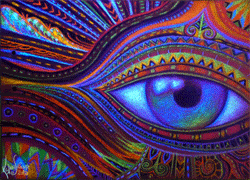Monthly Archives: June 2022
Who is Odin?

ODIN (Woden to the Anglo-Saxons) is a god of the mysterious realms of wisdom, cunning, sorcery, and death. Subtle, aristocratic, and at times inexplicable, Odin is the literal father of important gods, such as Thor, and All-Father to the whole of creation, divine and human. Amongst his gifts was the greatest of all: the gift of writing. To accomplish this Odin hung himself upside down upon the World Tree, the gigantic ash Yggdrasil ( a compound meaning “terrible horse”). After nine days of fasting and agony, in which “he made of himself a sacrifice to himself”, he “fell screaming” from the tree, having had revealed to him in a flash of insight the secret of the runes. Their initial manifestation took the form of eighteen powerful charms for protection, increase, success in battle and love-making, healing, and mastery over natural causes.
This story illustrates an important dynamic of the Northern pantheon, which did not allow for omnipotence: even Odin must pay his due. At Mimir’s well, which lay deep under the roots of Yggdrasil, the World Tree, the god had earlier chosen to undergo an important forfeit. Odin paid with one eye for a single drink of the enchanted water. His mouthful granted him wisdom and fore-sight. It is due to this sacrifice that Odin’s face is depicted with a straight line indicating an empty eye, or alternately, in a wide-brimmed hat pulled down low over the missing orb.
His quest for knowledge was never-ending. Upon his shoulders perched two ravens, Hugin (“Thought”), and Munin (“Memory”). These circled the Earth each day, seeing all, and then at night reported to Odin what they had learnt. He cherished them both, but particularly Munin, which seems to underscore the importance he placed on rune writing, record keeping, and honouring the heroic deeds of the past.
There is another bird associated with Odin, the eagle. The god often transformed himself into this canny raptor, both to view the workings of the world and to intervene when an avian form was better suited to his ends.
Odin’s fabulous grey horse Sleipnir (“Slippery One”) was like no other. This eight-legged horse was the offspring of a giant’s magical stallion and the “trickster” god, Loki, who disguised himself as an alluring mare to distract the stallion from the task of building a wall around Asgard, home of the Gods. If the wall had been completed by a certain date, Freyja, the goddess of beauty, war and sexuality would have been forfeit to the giant as payment for his labours. (The gods also stood to lose the Sun and the Moon, but did not seem particularly concerned about their impending loss!)
Loki was successful, but vanished for a few seasons as he had to bear the fruit of his trickery. He returned to Odin leading his equine offspring, which he presented as a gift. With his eight legs, Sleipnir could run twice as fast as ordinary steeds, and it is he who carries the valiant dead from the battle field to Valhalla.
In this realm warriors fought all day yet never died from their wounds, were made whole again in time for supper, at which they feasted upon the flesh of a similarly eternal magical boar who was born anew each day. Intoxicating mead filled their drinking horns, and the many-room hall rang with the song of the victorious rewarded there. Not a bad end for a pragmatic folk who lived and died by their iron.
For an alternative look at Odin, check out this post.
James Cheney: Invocation To The Dark Mother
Daniel: Prayer Before The Final Battle
blessed obyno: Queen of Ghosts
blessed obyno: Queen of Ghosts
Caerlion Arthur: The Great, Bloody and Bruised Veil of the World



